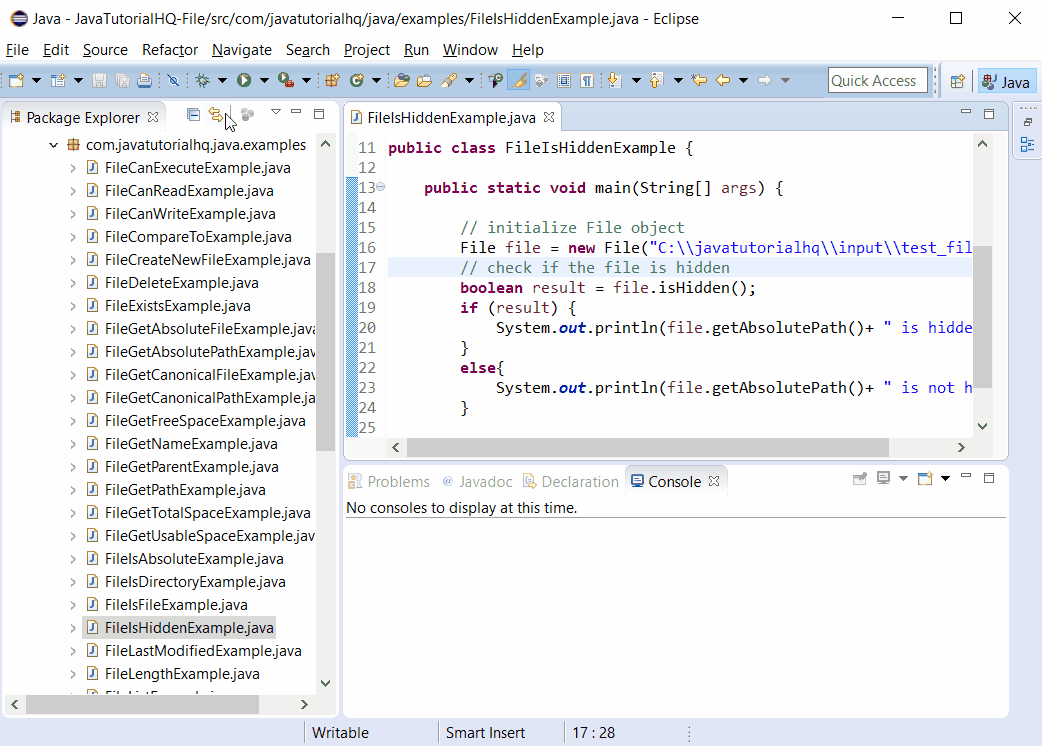java.io.File isHidden()
Description
Throws:
SecurityException – If a security manager exists and its SecurityManager.checkRead(java.lang.String) method denies read access to the file
Method Syntax
public boolean isHidden()
Method Argument
| Data Type | Parameter | Description |
|---|---|---|
| N/A | N/A | N/A |
Method Returns
This method returns a boolean, true if and only if the file denoted by this abstract pathname is hidden according to the conventions of the underlying platform.
Compatibility
Requires Java 1.0 and up
Java File isHidden() Example
Below is a java code demonstrates the use of isHidden() method of File class. The example presented might be simple however it shows the behaviour of the isHidden() method of File class. We put a check if the file is hidden or not using isHidden() method, the result is evaluated and messages are printed based on it.
package com.javatutorialhq.java.examples;
import java.io.File;
/*
* This example source code demonstrates the use of
* isHidden() method of File class.
*
*/
public class FileIsHiddenExample {
public static void main(String[] args) {
// initialize File object
File file = new File("C:javatutorialhqinputtest_file.txt");
// check if the file is hidden
boolean result = file.isHidden();
if (result) {
System.out.println(file.getAbsolutePath()+ " is hidden");
}
else{
System.out.println(file.getAbsolutePath()+ " is not hidden");
}
}
}

